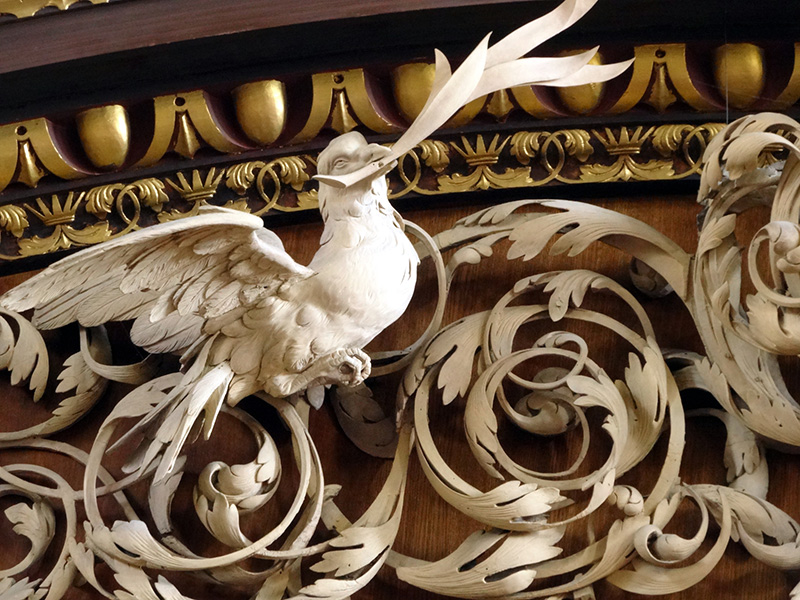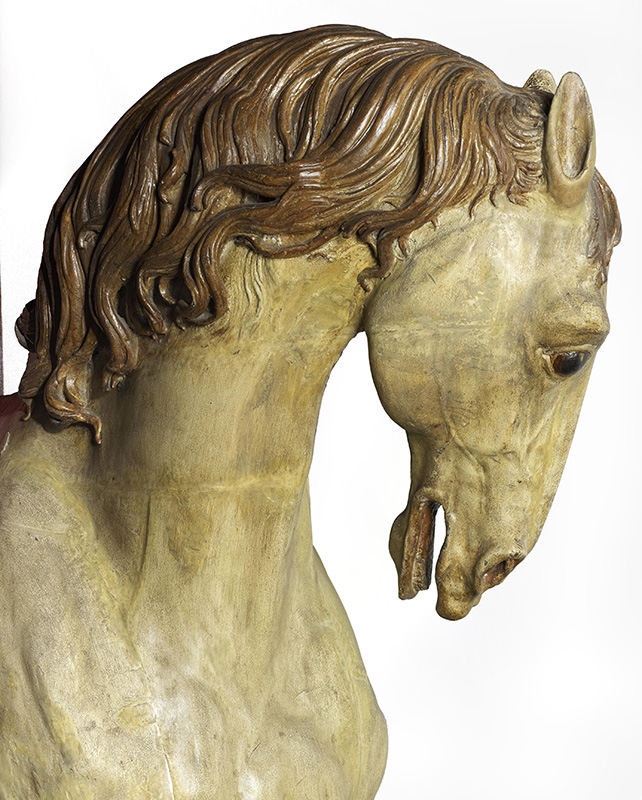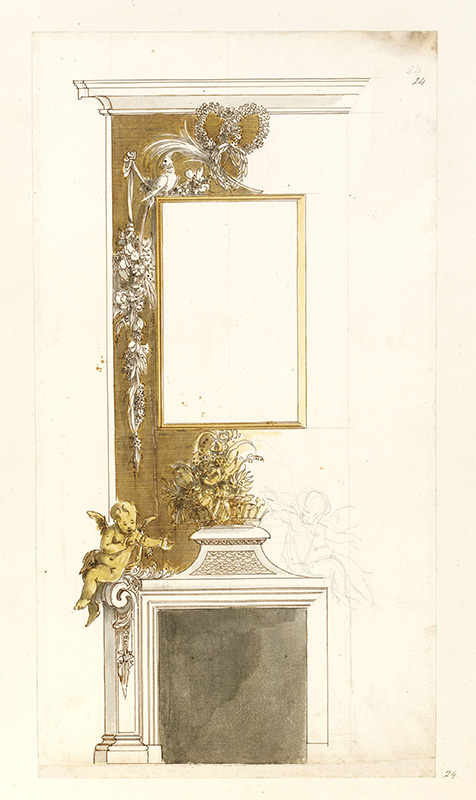Grinling Gibbons 300: Carving a Place in History
by Hannah Phillip
Grinling Gibbons has achieved legendary status as a sculptor and artist and is arguably the greatest carver in British history. He had an ability to transform unyielding and solid media into “loose and airy lightness” for which he was recognized as “the greatest master both for invention and rareness of work, that the world ever had in any age.”
The tercentenary of Gibbons’s death, August 3, 2021, provided an opportunity to celebrate the life and legacy of this Michelangelo of Wood. The celebration sparked collaboration on a remarkable scale involving an array of museums, historic houses, livery companies, makers, architects, curators, and researchers.
Gibbons pioneered a new and distinctive style, carving with an unsurpassed realism (figure 1).
Although he also worked in oak, stone, and bronze, he primarily used limewood. The wood’s straight-grained but soft structure produced crisp detail making the material particularly suited to Gibbons’s high-relief carving and his trademark swags and drops of fruit, flowers, foliage, fish, and birds.
Masterpieces for Kensington, Hampton Court, Windsor, and Whitehall palaces testify to his skill. Today his works are represented in the Royal Collection and Historic Royal Palaces, as well as across national and international museums, country houses, and churches.
The Grinling Gibbons Society was formed in 2020 to masterplan the tercentenary festival Grinling Gibbons 300: Carving a Place in History (August 2021–August 2022). The Society’s aim is to inspire learning and debate, making and research, and to give audiences the opportunity to see Gibbons’s work either for the first time or in new ways.
HRH The Prince of Wales, a passionate advocate of the arts and heritage, is the Tercentenary patron. His Royal Highness embodies the important connection with the Crown that Grinling Gibbons enjoyed across his career. From obscure beginnings Gibbons attained the greatest accolade as the King’s Carver. He was commissioned by Charles II in the remodeling of Windsor Castle, and was subsequently appointed in 1693 by William III to be Master Sculptor and Carver to the Crown.
The Society has led the way with a national exhibition, Grinling Gibbons: Centuries in the making which launched at Bonhams in London before touring to Compton Verney in Warwickshire. Bringing together material from national and regional museums, historic houses, churches, and private collections, the exhibition explores how Gibbons’s revolutionary style elevated British decorative carving to new heights and traces his journey from obscurity to fame. Highlights include one of two equestrian mannequins created by Gibbons for the display of the armor of Charles I and Charles II at the Tower of London.
Inspiration is the central theme of Centuries in the making. It examines the sources that shaped Gibbons’s work, including the stylistic and cultural influences of his Anglo-Dutch heritage (figure 3). Gibbons was born in Rotterdam, the Netherlands, to English parents, and his passion for music is revealed through his carving and can sometimes help date its production.
With an extraordinary output to his credit, far more than could be achieved by one man alone, the exhibition reflects on the vexed pursuit of identifying “the hand of Gibbons.” His style was closely emulated and widely promulgated, not least of all by his own workshop of talented journeymen carvers and apprentices who worked to his designs and under his aegis.
Gibbons’s legacy cannot be judged only on the work of his own hand but in the inspiration that he has given across 300 years: from Alexander McQueen, whose 13th collection (spring/summer 1999) featured wooden prosthetic legs enriched with Gibbonsesque carving worn by Paralympian Aimee Mullins, to David Esterly (1944–2019), American limewood carver, sculptor, and writer, whose career was inspired by the profound effect of an encounter with Gibbons’s work in a London church.
The Society plans to share the exhibition content digitally and is currently raising funding for development. One such project, Grinling Gibbons Online, is already providing virtual access to work by Gibbons, his studio, and other contemporaries working under his inspiration. As more public and private collections contribute content and images, the catalogue grows as a resource helping promote new scholarship into this rich area of study.
The Society has also instigated and helped fund a ground-breaking project to record Gibbons’s “Crucifixion” panel at Dunham Massey, the National Trust, through new technology and digital scanning (figure 4). Recordings from a laser scanner merged with photogrammetry have created a seamless 3D digital model allowing the study of the extraordinary detail of this masterpiece of 17th-century relief sculpture.
Looking to the next generations of carvers, the Grinling Gibbons 300 Award is a national competition for emerging craftspeople. A cohort of early-career carvers were invited to explore the theme of “art which arrives even unto deception,” a description given by Horace Walpole to Gibbons’s genius for carving with realism that could literally fool the eye (figure 5). The artists’ works are on display in conjunction with the exhibition at Compton Verney until January 30, 2022.
- Horace Walpole, Anecdotes of Painting in England, Volume 2 (Chatto and Windus, 1876), 552.
- John Evelyn, The Diary of John Evelyn, Volume II (M. Walter Dunne, 1901), 177 (Entry date: 16th June 1683).
Hannah Phillip is the Programme Director of the Grinling Gibbons Tercentenary and Society, and Curator of Grinling Gibbons: Centuries in the making. For more information about Grinling Gibbons 300, including the 2022 schedule of events, visit grinling-gibbons.org.
A print version of this article was published in The Magazine of the Decorative Arts Trust, one of our most popular member benefits. Join today!





